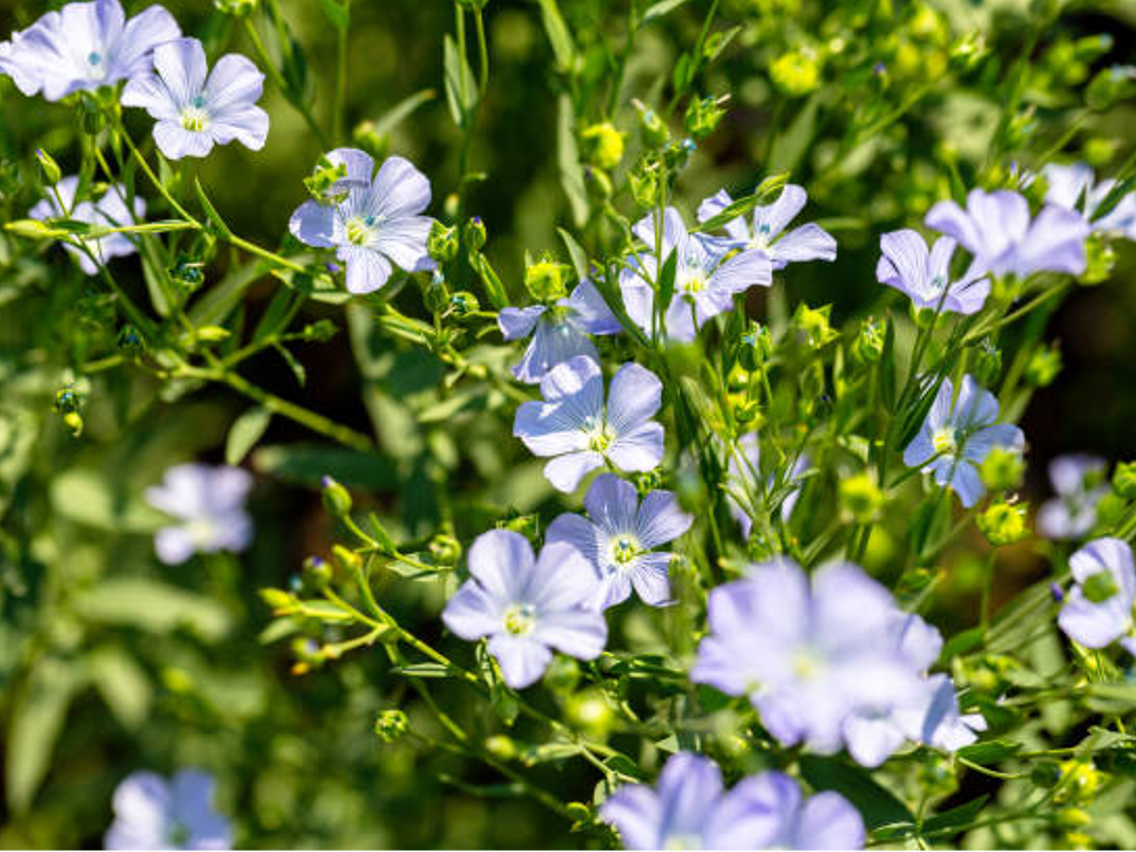Flax - Linum usitatissimum

Common Names: Flax, Common Flax, Linseed, Linum usitatissimum, Cultivated Flax, Trhovníček, Linseed plant, Linen plant
Latin Name: Linum usitatissimum
Origin: Africa, Asia, Australia, Europe, South America, North America
Short Introduction
Commonly known as Flax, this annual herb thrives best in upland regions with higher rainfall and well-drained soils. In the Czech Republic, Flax flourishes particularly in the Bohemian-Moravian Highlands. Seeds capable of germinating at temperatures as low as 2°C are sown in early March. Flax reaches maturity after nearly five months of growth, a stage indicated by the yellowing of its stem.
Detailed Description
Flax – a plant that has accompanied humanity for thousands of years.
Botanical Information
Flax (Linum usitatissimum) features an upright, slender stem with inconspicuous, sessile leaves and branches into sparse inflorescences. The plant is recognized by its delicate five-petaled light blue flowers accentuated with dark blue veins. The fruit is a five-chambered capsule containing oily seeds.
Origin and Distribution
Flax is among the oldest plants cultivated and utilized by humans. Historical references to Flax appear in Greek, Chinese, and Indian manuscripts, as well as in the Bible. Remnants of linen fabrics have been uncovered in tombs of ancient South American and Egyptian civilizations. Ancient texts report the use of Flax oil and its seeds as food and medicine. Some sources suggest Flax originated in South America, others in the region of present-day Iran, Egypt, or India. Due to millennia of cultivation and its widespread presence worldwide, pinpointing its exact origin is nearly impossible. Today, Flax is grown globally as an agricultural crop in temperate climates.
Usage / Dosage
Flaxseed is valued for its high fat content (up to 40%), with additional levels of dietary fiber (30%) and protein (20%). Most of the fat found in the seeds is in the form of omega-3 unsaturated fatty acids. As regular consumption of marine fish is uncommon in some regions, Flax offers an excellent plant-based alternative for obtaining omega-3s, which support heart health. Flaxseed is also recognized as a natural antioxidant.
Thanks to its mucilaginous substances, which help soothe irritated mucous membranes, Flaxseed is used especially for inflammations of the bronchi, lungs, and urinary tract. In cases of stomach hyperacidity, its mucilage forms a protective barrier. For constipation, these substances facilitate digestion and soften stools. Flaxseed oil can also be applied to burned skin and dry eczema. Other benefits include protection of the cardiovascular system, normalization of blood sugar and blood pressure, support for immune function, and relief of women's health issues such as painful menstruation and menopausal discomfort.
Active Compounds
The seed coat of Flaxseed is especially rich in mucilage—substances resembling a water solution of polymer sugars, released with the addition of hot liquid. Flaxseeds are also prized for their unsaturated fatty acids, which help neutralize free radicals and protect against vascular and heart tissue damage, as well as cancer. Flaxseed is a rich source of plant protein.
Traditional Dosage
For respiratory or digestive complaints, a Flaxseed infusion is traditionally taken three times daily. To prepare the infusion, pour boiling water over 2 teaspoons of Flaxseed (about 250 ml), let steep for half an hour, strain, and sip the resulting liquid. This infusion may also be used to ease childbirth, limited to three times per day up to one week before the expected due date. For skin problems, Flaxseed oil is gently massaged into the affected area twice daily. Flaxseed can also be consumed raw as an additive to various dishes, salads, or baked goods.
